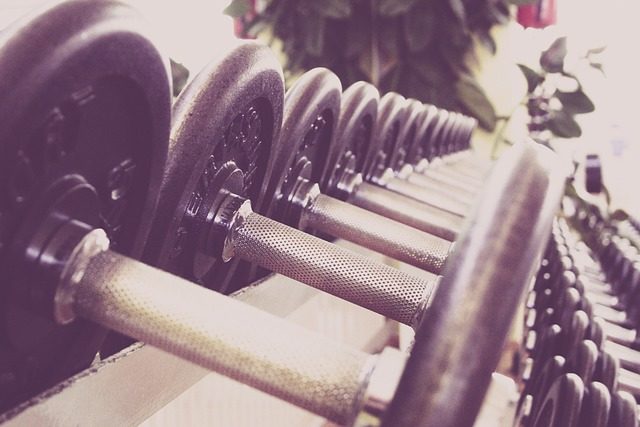Embarking on a journey to build muscle mass and sculpt your physique can be both rewarding and challenging. But fear not! This comprehensive guide to bulking will provide you with the knowledge and strategies to maximize your muscle gains while minimizing fat gain. Get ready to fuel your body, push your limits, and transform your physique!
Table of Contents
Key Takeaways
Gain serious muscle mass by understanding and optimizing the science behind bulking: muscle growth mechanisms, calorie surplus & protein synthesis.
Choose between clean or dirty bulking to reach goals effectively with a personalized diet plan tailored to individual needs.
Transition from bulking to cutting after 5 months for a lean physique. Maintain muscle mass with resistance training while reducing body fat!
The Science Behind Bulking

Bulking, a process aimed at gaining muscle mass, involves increased calorie intake, protein consumption, and strength training. Understanding the science behind this process is key for optimizing results and minimizing fat gain.
The process relies on three fundamental principles: muscle growth mechanisms, the importance of calorie surplus, and protein synthesis and intake.
Muscle Growth Mechanism
Resistance training triggers an amazing process of muscle fibers breaking down and rebuilding stronger, resulting in muscle gain. This process is called muscle hypertrophy, and it’s the key to building muscle mass.
When you challenge your muscles with resistance training, the fibers break down and later repair themselves as they recover. This repair process, along with proper nutrition and rest, allows you to achieve muscle gain with minimal fat gain.
Calorie Surplus Importance
Muscle growth and repair necessitate a calorie surplus as it supplies the additional energy and nutrients required. When you consume more calories than you burn, it creates a surplus that supports the building of muscle mass, ultimately helping you maximize your muscle gains during a bulking phase.
Achieving a calorie surplus can be accomplished by boosting your daily caloric intake, lowering your activity level, or both. A balanced diet can help with bulking by supplying the energy necessary for building and repairing muscle while also promoting minimal fat gain.
Protein Synthesis and Intake
Building strong, lean muscle mass, a vital component of muscle gain, heavily relies on protein. To maximize your muscle and strength gains during a bulk, it is recommended to consume between 2.2 grams and 3.4 grams of protein per kilogram of body weight alongside a strength training routine.
Choosing a diet full of:
Whole grains
Legumes
Fruits
Vegetables
Nuts
Seeds
Lean protein
is the perfect way to build up lean body mass. Spreading calorie intake throughout the day can help in achieving muscle gain with minimal fat gain.
Types of Bulking: Clean vs Dirty
There are two main types of bulking to help you reach your muscle gain goals: clean bulking and dirty bulking. Clean bulking emphasizes the consumption of nutrient-rich foods, which can help in achieving muscle gain with minimal fat gain, while dirty bulking encourages indulging in calorie-dense junk food for those looking to gain mass quickly.
The choice between clean and dirty bulking depends on your individual goals and preferences, as each method has its own benefits and drawbacks.
Clean Bulking
Clean bulking, a potent strategy for muscle building, prioritizes lean proteins, complex carbs, and healthy fats, facilitating muscle development while keeping fat gain to a minimum. By optimizing your macronutrient ratios for clean bulking, you can achieve the best results. Aim for 40% protein, 40% carbohydrates, and 20% fat.
Powerful workout strategies for clean bulking include compound exercises, progressive overload, and ample rest and recovery.
Dirty Bulking
Dirty bulking, a form of bulking, encourages the consumption of high-calorie foodstuff to meet calorie goals and optimize muscle growth, irrespective of potential additional fat gain. The main advantage of dirty bulking is that it makes it simpler to reach calorie goals. Nevertheless, it can result in excessive fat gain and can be unhealthy if not done correctly.
To dirty bulk safely, follow these steps:
Track your calorie intake and adjust it as needed.
Focus on consuming nutrient-dense foods.
Make sure you’re getting enough protein and fiber.
Monitor your body fat levels and adjust your diet accordingly.
Choosing the Right Approach
Choosing between clean and dirty bulking necessitates consideration of your objectives, lifestyle, and health status. If you want to get results quickly, dirty bulking may be the better option.
If you are looking for a healthier and more sustainable approach, clean bulking may be the better choice for you. Furthermore, it is essential to make sure that you are getting enough protein, carbohydrates, and healthy fats in your diet.
Designing a Bulking Diet Plan
Formulating a bulking diet plan entails the following steps:
Calculate your calorie needs.
Determine your macronutrient ratios (protein, carbohydrates, and fats).
Select nutrient-dense foods that meet your calorie and macronutrient requirements.
By following these steps, you can create a bulking diet plan tailored to your individual needs and goals.
This will help you achieve the desired muscle mass while minimizing fat gain.
Calculating Calorie Needs
The Basal Metabolic Rate (BMR) formula can be used to calculate bulking calorie needs, targeting an additional 300-500 calories above your daily maintenance calories or consuming an excess of 200-400 calories above your maintenance calories.
Individual factors like activity level and metabolism can play an important role in determining your calorie needs, so it’s essential to take these into account. Experts suggest consuming a diet with 10-20% more calories than what your body needs. This will help you get the best possible results when trying to increase muscle mass.
Macronutrient Ratios
Setting up appropriate macronutrient ratios is pivotal for reaching your bulking goals, ensuring your body receives an optimal amount of protein, carbohydrates, and fat to bolster muscle growth.
A great macronutrient ratio to consider for bulking is 20% protein, 45-60% carbohydrates, and 15-30% fat. Tailoring your macronutrient ratios to your individual needs based on factors such as body type, activity level, and goals is key to achieving the results you desire.
Food Choices
Including nutrient-dense foods in a bulking diet is a great way to ensure you’re getting adequate vitamins and minerals, healthy fats, and quality protein. A high-protein diet can help you maximize your gains and maintain a healthy body fat level. Incorporate whole unprocessed foods into your diet, such as:
Whole grains
Legumes
Beans
Fruits
Vegetables
Nuts
Seeds
Oils
Tracking your food in an app can be a great way to ensure you hit your calorie goals each day while you’re bulking.
Effective Workout Strategies for Bulking

Effective bulking workouts include compound exercises, progressive overload, and prioritizing rest and recovery. By incorporating these strategies into your workout routine, you can maximize muscle gains and minimize fat gain.
Let’s dive deeper into the benefits of each strategy and how to implement them in your training program.
Compound Exercises
Compound exercises are exercises that target multiple muscle groups at once, making them an incredibly effective way to promote overall muscle growth. Examples of compound exercises include:
Squats
Deadlifts
Bench presses
Military presses
Bent over rows
To ensure you’re performing compound exercises correctly, focus on proper form and technique. Make sure to include at least one compound exercise for each major muscle group in each workout for the most effective results.
Progressive Overload
Progressive overload is the exciting gradual increase of stress placed on the body during exercise. This is done by:
Increasing the weight
Increasing the number of reps
Increasing the number of sets
Increasing the intensity of the exercise
These methods are used to achieve maximum results.
Implementing progressive overload in your strength training routine ensures that you continually challenge your muscles and stimulate growth while avoiding plateaus.
Rest and Recovery
Rest and recovery are absolutely essential for muscle repair and growth, as they give the body the opportunity to recover from the stress of exercise and rebuild muscle tissue. Without proper rest and recovery, the body won’t be able to repair itself and muscle growth will be significantly hindered.
To ensure you’re training safely and avoiding overtraining and injury, it is essential to listen to your body and take regular breaks from training, create a balanced training program, and get enough sleep.
Learn more, visit How To Speed Up Muscle Recovery: 14 Proven Ways.
Monitoring Progress and Adjusting Your Plan
Monitoring progress and adjusting your plan based on measured success indicators and individual goals is crucial to achieving the best results in your bulking journey. By tracking your progress and making adjustments as needed, you can ensure that your bulking program is working effectively and efficiently.
Measuring Success
You can measure your success and progress by tracking your strength gains, body composition, and other indicators. Regular measurements of body weight, body fat percentage, and circumference measurements can help you track your progress over time.
Additionally, tracking strength gains in the gym can be a great way to measure your success and progress.
Making Adjustments
To maximize progress and reach your individual goals, you should first assess your current progress and determine if you are meeting your goals. If you are not meeting your goals, you should adjust your diet and training accordingly.
For example, if you are not gaining enough muscle mass, you may need to increase your calorie intake or adjust your macronutrient ratios. If you are gaining too much fat, you may need to reduce your calorie intake or adjust your macronutrient ratios.
Potential Risks and Precautions
During your pursuit of muscle building, awareness of potential risks and precautions including excess body fat gain, health risks, and the need for professional guidance, is vital.
By taking the necessary steps to avoid these risks, you can ensure a safe and effective bulking plan.
Avoiding Excessive Fat Gain
Controlled calorie intake and focused consumption of nutrient-dense foods are crucial strategies to prevent excessive fat gain during bulking. By tracking your daily intake and making adjustments as necessary, you can ensure that you’re fueling your body with the nutrients it needs to build muscle while minimizing fat gain.
Including nutrient-dense foods in your diet can also help you stay energized and healthy.
Managing Health Risks
Keeping a balanced diet and vigilant health monitoring are pivotal in managing health risks during the bulking phase. A balanced diet supplies the body with the necessary nutrients to build muscle mass and stay healthy.
Ensuring that you’re consuming nutrient-dense foods and staying active can help you avoid potential health problems and risk factors associated with bulking.
Seeking Professional Guidance
Professional guidance significantly contributes to the successful execution of a bulking plan. A certified sports nutritionist and trainer can provide expert advice on exercise form, technique, and tailored nutrition plans for maximum muscle growth.
Additionally, obtaining professional guidance can help ensure that your adjustments are tailored to your individual needs and avoid injuries through correct training techniques.
Supplements to Support Bulking
Supplements like protein powders, creatine monohydrate, and other useful supplements can support muscle growth during bulking. Incorporating these supplements into your bulking plan furnishes your body with extra nutrients and energy, optimising muscle gains.
These supplements can help you reach your goals faster and more efficiently. They can also help you
Protein Powders
Protein powders provide a convenient source of protein to support muscle growth. They can help you reach your daily protein intake goals, especially if you’re struggling to consume enough protein through whole foods alone.
Opt for high-quality protein powders from reputable brands to ensure you’re getting the best product for your bulking journey.
Creatine Monohydrate
Creatine monohydrate is a popular supplement that can enhance strength, power, and muscle mass gains. It works by increasing the availability of adenosine triphosphate (ATP), the primary energy source for muscle contractions, allowing you to perform better and recover faster during workouts.
To maximize the benefits of creatine monohydrate, it is recommended to take doses of 5-10 grams per day, with a loading phase of 20-25 grams per day for the first 5-7 days.
Other Useful Supplements
Other useful supplements that may support your bulking efforts include:
Branched-chain amino acids (BCAAs): essential amino acids that are vital for muscle growth and recovery, helping to reduce muscle soreness and fatigue, and enhance performance
Beta-alanine: a non-essential amino acid that can increase muscle carnosine levels, leading to improved exercise performance and muscle endurance
Pre-workout formulas: supplements that typically contain a combination of ingredients such as caffeine, creatine, and nitric oxide boosters to enhance energy, focus, and muscle pump during workouts.
Beta-alanine is an amino acid that can help you reach your performance goals faster and reduce fatigue. Pre-workout formulas can give you a surge of energy and concentration for your workout, helping you to perform better and stay energized longer.
Transitioning from Bulking to Cutting
The transition from bulking to cutting requires recognizing the optimal time to switch, modifying diet and training, and preserving muscle mass.
In this section, we’ll explore the steps involved in making a smooth transition from bulking to cutting to help you achieve a lean and muscular physique.
When to Switch
Switch to cutting when you’ve achieved your desired muscle mass or if your body fat levels become too high. It’s recommended to transition from bulking to cutting after a minimum of five months of bulking to ensure you can achieve a noticeable amount of muscle growth.
When cutting, you should focus on reducing your calorie intake and increasing your physical activity. This
Adjusting Diet and Training
When transitioning from bulking to cutting, adjust your diet and training by creating a calorie deficit, increasing protein intake, and incorporating cardiovascular exercise.
Gradually decrease your calorie intake over a period of three weeks, and introduce cardio and a caloric deficit during the cutting phase to help you achieve a leaner physique while preserving muscle mass.
Maintaining Muscle Mass
Maintaining muscle mass during cutting is crucial to preserve your hard-earned gains. Continue resistance training and monitor your progress to ensure that you’re not losing muscle mass as you lose body fat.
Focus on compound exercises and progressive overload to maintain muscle mass and strength while you cut.
Summary
In conclusion, bulking is a rewarding journey that requires dedication, knowledge, and strategic planning. By understanding the science behind bulking, choosing the right bulking approach, designing an effective diet plan, incorporating workout strategies, monitoring progress, and being aware of potential risks and precautions, you can achieve your muscle-building goals while minimizing fat gain. It’s time to fuel your body, push your limits, and transform your physique!
Frequently Asked Questions
What does it mean to do bulking?
Bulking is a process of building muscle and gaining weight by consuming more calories than your body needs. It takes hard work, dedication and consistency to achieve great results.
Is bulking actually healthy?
Bulking can be a healthy choice if done properly, especially for those who are underweight or don’t have much lean muscle mass. Eating nutrient-dense foods and maintaining a proper calorie surplus while avoiding body image issues and disordered eating habits is key.
How do I start bulking?
Start your bulk transformation by eating at a caloric surplus, consuming protein with every meal, doing light cardio, adding nuts and nut butters to your diet, performing compound lifts instead of isolations, timing your carbs, getting plenty of rest, and understanding your limitations.
How long should I do bulking?
For the most effective bulking experience, it is recommended to commit to a 16-26 week bulk cycle – or even longer if desired. After your bulk, incorporate a 4-8 week cutting cycle to help you achieve your desired muscle mass and lean physique.
How do I know when to switch from bulking to cutting?
When you have achieved your desired muscle mass or if your body fat levels become too high, it’s time to switch from bulking to cutting.









